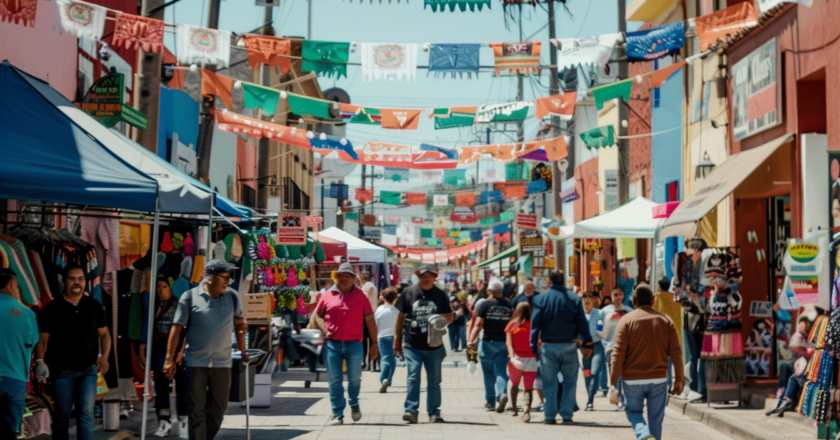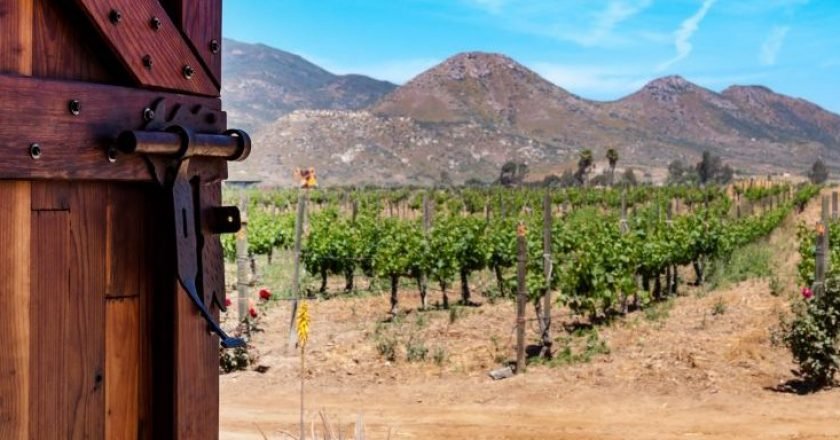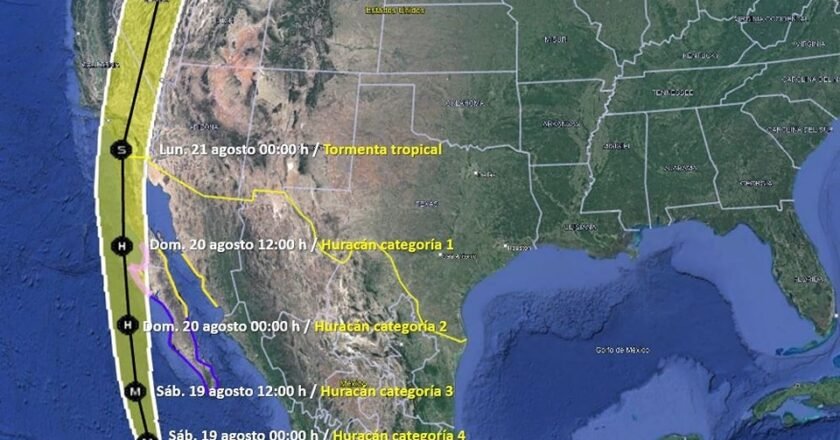UPDATE: Due to Hurricane Hilary Provino has announced that the Paellas Contest that was going to be held this Sunday has been rescheduled for Sunday, August 27, 2023. The Ensenada half marathon race has also been rescheduled for the following weekend.
Hurricane Hilary intensified on Thursday, reaching Category 4 strength off the Pacific coast of Mexico and is expected to bring heavy downpours to the southwestern United States over the weekend.
As of early Friday morning, the storm boasted sustained winds around 220 kilometers per hour (136 miles per hour). According to the U.S. National Hurricane Center in Miami, it was anticipated that the hurricane would continue gaining strength until later in the morning. Meteorologists, however, expect Hilary to start weakening by Saturday.
Tropical storm conditions might begin to affect the Baja California peninsula by late Friday. Hilary’s projected path could either lead it to make landfall in central parts of the peninsula by Sunday, or it might stay offshore as it moves toward Southern California.
The center of Hilary was located about 685 kilometers (425 miles) south of Los Cabos, at the southern tip of the Baja California Peninsula. It was moving in a west-northwest direction at around 22 kilometers per hour (13.6 miles per hour), but is expected to gradually turn northward on Saturday.
The Hurricane Center has issued a hurricane warning and a tropical storm alert for parts of Baja California Sur, meaning tropical storm conditions are expected within 36 hours and hurricane conditions within 48 hours. There’s also a tropical storm alert for other areas of Baja California.
Meteorologists speculate that as Hilary approaches or grazes the Baja California peninsula, it could briefly survive as a tropical storm or depression and cross into the United States. Notably, no tropical storm has made landfall in Southern California since September 25, 1939, according to the U.S. National Weather Service.
“The rains from Hilary in the southwestern U.S. are predicted to peak this weekend and into Monday,” the NHC pointed out. “Flash and urban flooding are a possibility, with potential significant impacts.”
The area that could be affected by the heavy rains stretches from Bakersfield, California, through Yuma, Arizona, and into parts of southern Nevada. The forecast for excessive rainfall in Southern California spans from Sunday to Tuesday, the Los Angeles meteorological office reported.
While the chances of Hilary making landfall as a tropical storm in California are slim, there’s potential for heavy rainfall and flooding, noted Daniel Swain, a climatologist at UCLA, on Wednesday.
The Mexican government has indicated that the weakened storm could hit between the cities of Playas de Rosarito and Ensenada in the state of Baja California by Sunday night.
Meanwhile, the city of Yuma was preparing on Thursday by setting up a self-service station for residents to fill sandbags. The station will be stocked with sand and bags as long as supplies last, with residents allowed to take up to five bags per vehicle.
Governor of Baja Warns Citizens to Stay Indoors During Hurricane Hilary
The Governor of Baja California, Marina del Pilar Ávila Olmeda, has urged the state’s residents to be attentive to the developments of Hurricane “Hilary,” while emphasizing that there’s no need for undue alarm.
Currently, Hurricane Hilary is classified under the Yellow code. However, the Governor pointed out that once the hurricane reaches Baja California, it may be upgraded to the more serious Red code. As such, she stressed the importance of taking this warning with the gravity it deserves.
The first signs of rain, albeit mild, are expected to begin by Saturday and are forecasted to intensify come Sunday. The Governor noted, “It is essential to alert the public without causing panic. It’s understandable for citizens to be anxious about such situations. I urge everyone to stay updated through official media channels where continuous information will be provided.”











